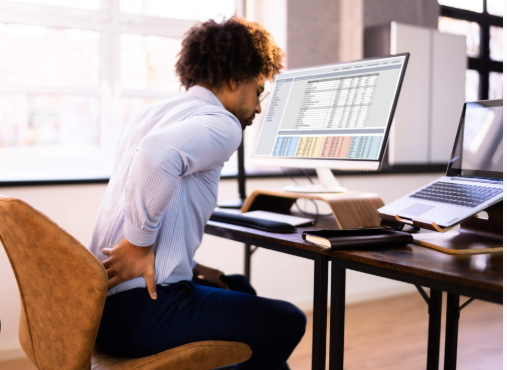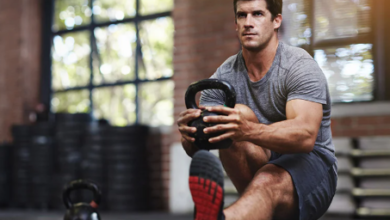Protecting Your Aging Spine: Dr. Larry Davidson’s Guide to Daily Routines

Aging may be inevitable, but spinal discomfort doesn’t have to be. With consistent movement, proper posture and small adjustments to everyday environments, older adults can reduce strain on the spine and promote long-term comfort. Dr. Larry Davidson, a leader in spinal surgery, recognizes that mobility plays a foundational role in spinal health, especially when routines are designed with intention.
As the spine changes over time, the soft tissues surrounding it also lose some of their natural elasticity and resilience. Daily activities that once felt effortless may begin to place disproportionate stress on joints and discs. But with thoughtful planning, these stressors can be minimized and even reversed through regular, spine-friendly movement.
Why Daily Movement Supports Spinal Longevity
The spine relies on motion to stay nourished and functional. Unlike other parts of the body that benefit from rest, the spinal discs depend on compression and decompression from movement to maintain hydration and flexibility. A sedentary lifestyle can reduce this natural process, accelerating stiffness and degenerative changes.
Frequent, low-impact movement helps reduce joint pressure, increase blood flow and improve core muscle engagement. It supports posture, coordination and balance, key areas that tend to weaken with age. Simple activities like walking, reaching and rotating the torso all help maintain spinal function. When mobility becomes a routine part of the day rather than a separate workout, long-term adherence improves and so do outcomes.
Morning Routines That Set the Tone
Mornings present an ideal opportunity to prepare the spine for the day ahead. After hours of stillness during sleep, the body may feel stiff or tight, especially in the lower back and neck. Gentle stretching can help restore flexibility and stimulate circulation.
Start with slow, controlled movements such as overhead reaches, shoulder rolls and side bends. These target the thoracic spine and shoulders, areas prone to rounding or tightness. Follow with a short forward fold, knees slightly bent, to decompress the lumbar spine.
Breathing plays a role, too. Coordinated inhalation and exhalation during movement improves oxygen delivery to the muscles and increases overall relaxation. Even five to ten minutes of mobility-focused activity in the morning can improve posture and reduce stiffness throughout the day.
Adjusting the Home for Spinal Support
Many spinal stressors come not from accidents, but from repetitive strain during common activities. Sitting in the wrong chair, bending awkwardly to load a dishwasher or standing for too long in an unsupported position can all contribute to spinal fatigue.
Ergonomic adjustments at home can significantly reduce these issues. Supportive seating with lumbar support helps maintain the natural curve of the lower spine. Raising frequently used items to waist level minimizes repetitive bending. Anti-fatigue mats in the kitchen can ease pressure during food preparation or dishwashing.
Building Better Sitting and Standing Habits
Sitting for long periods can compress the discs and deactivate muscles that protect the spine. But standing all day can also fatigue the postural muscles and cause tightness. The key is alternating positions throughout the day.
Set a reminder to stand and stretch every 30 to 45 minutes. Shifting weight from side to side, performing ankle rolls or doing a few leg swings can help keep the spine and hips mobile. Standing desks or adjustable workstations make it easier to transition between positions.
When sitting, place both feet flat on the floor and avoid crossing the legs for extended periods. The knees should be at hip height or slightly lower, and the back should be supported without leaning heavily into the chair. Cushioning or lumbar pillows can reinforce the spine’s natural curvature.
Dr. Larry Davidson often reminds patients that small daily choices add up. He has observed that those who stay consistent with movement, whether through daily walks, morning stretches or active chores, experience less stiffness, more confidence in their mobility and fewer incidents of spinal fatigue.
Evening Wind-Downs That Promote Recovery
Evening routines offer a chance to undo the compression and tension accumulated throughout the day. Gentle stretches before bed help improve sleep quality and prepare the spine for a night of rest. Target the hips, lower back and hamstrings, areas that tighten with prolonged sitting or standing.
Restorative movements such as reclined twists, cat-cow stretches, and supported child’s pose allow the spine to lengthen and decompress. A brief session of diaphragmatic breathing can further relax the muscles and nervous system.
Using a firm but supportive mattress and a properly aligned pillow setup also promotes spinal recovery overnight. Side sleepers may benefit from a pillow between the knees to keep the hips aligned, while back sleepers can try a small cushion under the knees for lower back relief.
Read Also: Learn All About How to Become Ultrasound Technician
Walking With Intention
Walking remains one of the safest and most effective forms of movement for spinal health. It engages core and hip muscles, improves balance, and encourages upright posture. The key is walking with intention, with the head aligned over the shoulders, arms swinging naturally and even strides.
Even short walks spaced throughout the day offer spinal benefits. They break up long periods of stillness and stimulate circulation. Comfortable footwear with appropriate arch support adds another layer of protection. Walking with a friend or pet, or as part of a post-meal routine, can help build consistency and turn it into a sustainable habit.
Daily Choices That Shape Long-Term Health
Protecting an aging spine doesn’t require a dramatic overhaul. Instead, it calls for small, repeated decisions that prioritize mobility, alignment and balance. Stretching for a few minutes in the morning, adjusting a chair or standing during a phone call may seem minor, but over time, they build resilience.
Routine matters. The way people move, sit, stand, and rest throughout the day has a cumulative effect. Building mobility into those moments, rather than adding it as a separate chore, makes it easier to stay consistent and committed. With a practical, supportive routine, older adults can safeguard their spines, maintain independence and move with greater ease, no matter their age.




